Building a strong back is super important, not just for how you look, but for your overall health too. Whether you're hitting the gym or working out at home, dumbbells are a fantastic tool. They're easy to use, you can adjust the weight, and they let you really focus on each side of your back. This guide is all about how to use dumbbell exercise for the back to sculpt it, improve your posture, and boost your strength.
Key Takeaways
- Dumbbells are great for back workouts because they're easy to get, you can change the weight as you get stronger, and they let you work each side of your body separately for better balance.
- Exercises like the dumbbell row, bent-over row, and single-arm row are solid moves to start with for building a stronger back.
- More challenging exercises like the Romanian deadlift, dumbbell pullover, and renegade row can add more intensity and target different back muscles.
- To get the most out of your dumbbell back workouts, make sure you warm up properly, focus on good form, and gradually increase the weight or reps over time.
- A well-trained back not only looks good but also helps you stand taller, reduces pain, and makes you stronger for sports and everyday life.
Understanding Your Back Muscles
Alright, let's talk about the back. It's not just one big slab of muscle, you know? It's actually a pretty complex network that does a ton for us, from keeping us upright to helping us lift stuff. When we're talking about dumbbell exercises for your back, we're really aiming to hit a few key players.
Key Muscle Groups for a Strong Back
Think of your back muscles like a team. Each one has a specific job, and they all need to work together. Here are the main ones we'll be focusing on:
- Trapezius (Traps): These are the muscles in your upper back and neck. They help you move your shoulder blades, like when you shrug your shoulders. They're pretty visible and contribute to that upper back thickness.
- Rhomboids: Tucked between your shoulder blades, these guys are responsible for pulling your shoulder blades back and down. They're super important for posture and stopping you from hunching over.
- Latissimus Dorsi (Lats): These are the big muscles on the sides of your back, often giving that "V" shape. They help pull your arms down and back, which is a big part of many pulling movements.
- Erector Spinae: This is a group of muscles that run all the way down your spine, from your neck to your pelvis. They're the backbone of your back, literally, helping you stand tall and keeping your spine stable. Strengthening these is key for preventing lower back pain.
There are actually dozens of muscles in your back, but hitting these main ones will give you the most bang for your buck when it comes to building strength and improving how you look and feel. You can find some great dumbbell exercises to build a stronger back that target these areas.
The Role of Each Muscle in Movement and Posture
So, why bother with all these muscles? Well, they're doing a lot more than you might think. Your traps and rhomboids work together to keep your shoulders back and down, which is a big part of good posture. If these get weak, you might find yourself slouching, especially if you sit at a desk a lot. The lats are your primary movers for pulling actions, whether you're grabbing something off a high shelf or doing a pull-up. And the erector spinae? They're your postural support system. They work constantly to keep your spine in a neutral position, preventing it from collapsing forward. When these muscles are strong, you're less likely to experience aches and pains, and you'll move more efficiently in pretty much everything you do.
A strong back isn't just about looking good; it's about function. It supports your entire body, helps prevent injuries, and makes everyday tasks easier. Neglecting your back muscles can lead to imbalances and pain down the line.
Getting a handle on these muscles and how they work is the first step to sculpting a back that's both strong and looks great. We'll get into how dumbbells can help with that next.
Why Dumbbells Are Ideal for Back Training
When it comes to building a strong and sculpted back, dumbbells might just be your best friend. They're not just for bicep curls, you know. These simple weights offer a surprising amount of versatility and effectiveness for targeting those important back muscles.
Accessibility and Scalability for All Levels
Dumbbells are fantastic because pretty much anyone can use them. Whether you're just starting out or you've been lifting for years, you can find a weight that works for you. Unlike barbells, which can have a steep learning curve and require a spotter for heavier lifts, dumbbells are much more forgiving. You can start with a light pair to nail down the form for exercises like rows, and then gradually increase the weight as you get stronger. This makes them super accessible for beginners and allows for steady progress, which is key for building muscle over time. You can even find adjustable dumbbells, which are great if you don't have a lot of space or want to easily change weights between sets. This makes them a great option for home workouts too.
Enhanced Range of Motion and Muscle Isolation
One of the cool things about dumbbells is how they let you move more freely. With a barbell, your arms are kind of locked into a set path. Dumbbells, though, let each arm move independently. This often means you can move the weight through a bigger range of motion, which can really help stimulate muscle growth. Plus, because each arm is working on its own, you're less likely to let one side take over. This helps you really focus on squeezing those back muscles and can lead to a more balanced development. It's a different kind of challenge than using machines or barbells, and it can be really effective for hitting those smaller stabilizing muscles too.
Unilateral Training for Balanced Development
This is where dumbbells really shine for back training. Unilateral training means working one side of your body at a time, like with a single-arm dumbbell row. This is super important because most of us have slight imbalances between our left and right sides. When you use a barbell, your stronger side can often compensate for the weaker one, hiding those imbalances. Dumbbells force each side to do its own work. This not only helps you identify where you might be weaker but also gives you the chance to correct it. Building strength evenly on both sides is not only good for aesthetics but also for preventing injuries and improving overall posture. It's a smart way to build a truly balanced back.
Dumbbells offer a unique advantage by allowing for independent limb movement, which is particularly beneficial for identifying and correcting muscular imbalances. This unilateral approach ensures that both sides of the back develop symmetrically, contributing to better posture and reducing the risk of injury. It's a simple yet powerful way to train.
Foundational Dumbbell Back Exercises
When you're looking to build a stronger, more sculpted back, starting with the right exercises is key. Dumbbells are fantastic for this because they're accessible and let you really focus on the movement. We're going to cover a couple of absolute staples that will get you well on your way.
The Versatile Dumbbell Row
The dumbbell row is a powerhouse exercise for your back. It hits a lot of the important muscles at once, like your lats and the muscles between your shoulder blades (rhomboids). Doing rows regularly can really help pull your shoulders back into a better position, which is great for posture. Plus, it's an exercise you can keep adding weight to as you get stronger, making it a solid choice for building muscle over time. It's a horizontal pull, meaning it works against that forward-leaning posture many of us get from sitting at desks all day. This movement helps counteract that by pulling your shoulder blades together.
Dumbbell Bent-Over Row Technique
To do the dumbbell bent-over row, start by standing with your feet about shoulder-width apart. Hinge at your hips, pushing your butt back while keeping your back straight and your chest up. Your gaze should be towards the floor to keep your neck neutral. Hold a dumbbell in each hand with your palms facing each other (a neutral grip). From this position, pull the weights up towards your chest, squeezing your shoulder blades together at the top. Then, slowly lower the dumbbells back down until your arms are fully extended. Focus on using your back muscles to lift the weight, not just your arms. Aim for 3 sets of 10 to 12 repetitions.
Single-Arm Dumbbell Row for Targeted Strength
The single-arm dumbbell row is similar to the bent-over row but done one arm at a time. This is great because it lets you focus even more on the working side and can help fix any strength differences between your left and right sides. To perform it, you can place one knee and one hand on a bench for support, keeping your back flat and parallel to the ground. Let the dumbbell hang straight down from your shoulder. Pull the dumbbell up towards your hip, keeping your elbow close to your body. Squeeze your back muscles at the top, then slowly lower the weight back down. Completing reps on one side before switching to the other helps ensure balanced development. This exercise is a great way to build back strength.
When performing any dumbbell back exercise, remember that form is king. It's better to lift a lighter weight with perfect form than a heavier weight with sloppy technique. This not only prevents injuries but also makes sure you're actually working the target muscles effectively. Don't be afraid to start light and gradually increase the weight as you feel more confident and stronger.
Here's a quick breakdown of the muscles targeted by these foundational movements:
- Dumbbell Bent-Over Row: Primarily targets the lats, rhomboids, and traps.
- Single-Arm Dumbbell Row: Also hits the lats, rhomboids, and traps, with an added benefit of core stabilization and addressing muscle imbalances.
These exercises are excellent starting points. They are effective, relatively easy to learn, and can be scaled up as you progress. Making them a regular part of your routine will set a strong foundation for a healthier, more capable back.
Advanced Dumbbell Back Movements
Once you've got a solid handle on the basics, it's time to push your back training to the next level. These advanced dumbbell movements will challenge your muscles in new ways, building serious strength and definition. We're talking about exercises that demand more control, engage your core intensely, and really target those often-neglected areas.
Mastering the Dumbbell Romanian Deadlift
The Romanian Deadlift (RDL) is a fantastic exercise for hitting your hamstrings and glutes, but it's also a powerhouse for your lower back and the entire posterior chain. When you do it with dumbbells, you get a slightly different feel and can focus on that deep stretch.
Here's how to nail it:
- Start standing with your feet hip-width apart, holding a dumbbell in each hand in front of your thighs. Keep a slight bend in your knees throughout the movement.
- Hinge at your hips, pushing your butt back as if you're trying to touch a wall behind you. Keep your back straight – no rounding!
- Lower the dumbbells down along your shins, maintaining that flat back. Go as low as you can while keeping your form solid, usually until you feel a good stretch in your hamstrings. This might be below your knees or even closer to your ankles, depending on your flexibility.
- Engage your glutes and hamstrings to pull yourself back up to the starting position, squeezing your glutes at the top.
Remember, the focus here is on the hip hinge, not squatting. If your back starts to round, you've gone too far down. It's better to do fewer reps with perfect form than to risk injury.
The Romanian Deadlift, when performed correctly with dumbbells, is a key exercise for developing a strong posterior chain. It teaches your body to hinge properly, a movement pattern that's vital for everyday life and athletic performance. Don't rush the eccentric (lowering) phase; control is your friend here.
The Dumbbell Pullover for Lat Development
Don't let the name fool you; while it might feel like a chest exercise, the dumbbell pullover is actually a fantastic way to stretch and engage your latissimus dorsi (lats), the large muscles on the sides of your back. It also works your serratus anterior and can give your chest a good stretch too.
To perform it:
- Lie on a flat bench with your feet flat on the floor. Hold one dumbbell with both hands, cupping one end with your palms and your thumbs wrapped around the handle. Extend the dumbbell straight up over your chest.
- Keeping a slight bend in your elbows, slowly lower the dumbbell in an arc behind your head. Feel the stretch in your lats and chest.
- Pull the dumbbell back over your chest using your lats, keeping the tension on those back muscles.
This movement really opens up the rib cage and can improve your posture over time. Aim for 3 sets of 10-15 reps, focusing on that controlled stretch and contraction. It's a great way to add a different kind of stimulus to your back routine, complementing the pulling movements you're already doing. You can find more details on dumbbell back exercises that target different areas.
Renegade Rows for Core and Back Integration
Now, this one is a serious challenge. The Renegade Row combines a plank with a dumbbell row, meaning you're not only working your back muscles but also your entire core to keep you stable. It's a true test of strength and control.
Here's the breakdown:
- Get into a high plank position with a dumbbell in each hand, resting on the floor. Your hands should be directly under your shoulders, and your body should form a straight line from head to heels. Keep your core tight and your glutes squeezed.
- Keeping your hips as still as possible, row one dumbbell up towards your chest, squeezing your shoulder blade. Avoid twisting your torso.
- Lower the dumbbell back to the floor with control.
- Repeat on the other side. That's one rep.
This exercise is tough, and it's easy to let your hips sag or twist. Focus on maintaining a solid plank throughout. Start with lighter dumbbells until you can perform the movement with good form. Aim for 3 sets of 6-10 reps per side. It's a great way to build a strong, stable core that supports your entire back.
Optimizing Your Dumbbell Back Workouts
So, you've got the exercises down, you know which muscles you're targeting, and you're ready to get to work. But how do you make sure you're actually getting the most out of your dumbbell back sessions? It's not just about picking up weights and moving them around. There's a bit more to it, and getting these details right can make a big difference in your progress and help you avoid unnecessary aches and pains.
Effective Warm-Up Routines
Before you even think about picking up those dumbbells for your main lifts, you absolutely need to warm up. Think of it like getting your car ready for a long drive – you wouldn't just start it up and floor it, right? Your muscles need a similar kind of preparation. A good warm-up gets blood flowing to the muscles, makes your joints more mobile, and primes your nervous system for the work ahead. This can seriously cut down on your risk of injury.
Here’s a simple breakdown of what a good warm-up might look like:
- Light Cardio (5-10 minutes): Get your heart rate up a bit. This could be a brisk walk, some jogging in place, or cycling. The goal is just to get warm and a little sweaty.
- Dynamic Stretching (5-10 minutes): These are active movements that take your joints through their range of motion. Think arm circles (forward and backward), torso twists, leg swings, and maybe some cat-cow stretches.
- Movement-Specific Activation (5 minutes): Do a few lighter sets of the exercises you're about to perform, or similar movements. For back training, this might include some band pull-aparts or very light dumbbell rows to get those specific muscles firing.
Proper Form and Progressive Overload
This is where the real gains happen, but also where people often get hurt. Focusing on perfect form is non-negotiable, especially when you're working with dumbbells. Because you're using two separate weights, it's easier to let one side take over or to cheat the movement. Always prioritize control and the mind-muscle connection over lifting heavier weight with sloppy form. If you're not feeling the target muscles work, you're probably doing it wrong.
Progressive overload is the principle of gradually increasing the demand on your muscles over time. This is how you get stronger and build more muscle. With dumbbells, this can be achieved in several ways:
- Increase the Weight: The most obvious method. Once you can comfortably complete your target reps with good form, it's time to go up a weight. Dumbbells make this easy because they come in small increments.
- Increase Reps or Sets: If you don't have a heavier dumbbell available, you can do more repetitions within your set or add an extra set.
- Decrease Rest Times: Shortening the rest periods between sets makes the workout more metabolically demanding.
- Improve Form/Tempo: Slowing down the eccentric (lowering) portion of a lift or improving the range of motion can make an exercise significantly harder.
Remember, adding weight is great, but not if it means sacrificing the quality of your movement. It's a balance. If you're struggling to maintain good form, it's a sign that you've pushed too far, too fast. Back off slightly and focus on technique before trying to lift more.
Structuring Your Dumbbell Exercise for the Back Routine
How you put your workout together matters. You don't want to just randomly pick exercises. Think about what you want to achieve. Are you focusing on building overall thickness, width, or maybe addressing specific weak points?
A balanced dumbbell back workout typically includes exercises that hit different parts of your back:
- Upper Back/Traps: Exercises like dumbbell shrugs or upright rows.
- Mid-Back/Rhomboids: Think dumbbell rows, especially variations like the bent-over dumbbell row.
- Lats (Latissimus Dorsi): Pullovers and single-arm rows are great for this.
- Lower Back: While not always directly targeted with dumbbells (as exercises like deadlifts are often done with barbells), movements like the Romanian deadlift engage the lower back significantly.
Consider your overall training split. If you have a dedicated back day, you might do 4-6 exercises. If you're pairing back with another muscle group, you might choose 2-3 key exercises. Always start with your most demanding compound movements when you're fresh, and finish with isolation exercises if needed.
Benefits of a Sculpted Back
So, you've been putting in the work with those dumbbells, focusing on building a strong back. That's awesome! But what's the payoff, really? Well, beyond just looking good in a t-shirt, a well-developed back does a ton for your overall well-being. It's not just about aesthetics; it's about how your body functions day-to-day.
Improving Posture and Reducing Pain
Think about how you sit at your desk or look at your phone. Most of us spend a lot of time hunched over, right? A strong back acts like a natural scaffolding for your spine. When those back muscles are toned and working well, they help pull your shoulders back and keep your spine aligned. This means less slouching and, importantly, less of that nagging ache in your neck and lower back. It's like giving your body a constant, gentle reminder to stand tall. This improved alignment can make a huge difference in how you feel, especially after long days.
Boosting Overall Strength and Athletic Performance
Your back muscles are involved in pretty much everything you do. Whether you're lifting groceries, playing a sport, or even just getting out of a chair, your back is working. Strengthening it means you'll be more capable in all these activities. For athletes, a powerful back translates to better performance in lifts, more stability, and a reduced risk of injury. It's a foundational piece of the puzzle for any kind of physical pursuit. Building that back strength is key to achieving better results in your training and daily life.
Achieving a Balanced and Aesthetically Pleasing Physique
Let's be honest, a sculpted back looks impressive. It contributes to that desirable V-taper shape, giving you a more balanced and athletic look. When your back is well-developed, it creates a more proportional physique, making your shoulders and chest appear broader and your waist narrower. It's not just about the front view; a strong back adds to your overall presence and confidence. It shows you've put in the effort to build a complete, well-rounded body.
Here’s a quick look at what you gain:
- Better Posture: Stand taller, feel better.
- Reduced Pain: Less strain on your neck and spine.
- Increased Power: More strength for lifting and sports.
- Injury Prevention: A stronger back protects your spine.
- Improved Aesthetics: A balanced, athletic look.
Building a strong back isn't just about vanity; it's a practical investment in your physical health. It supports your spine, improves your posture, and makes everyday tasks easier and safer. Plus, who doesn't want to look good while feeling good?
Want a stronger, more defined back? Working out your back muscles can really improve your posture and make you look and feel great. A sculpted back isn't just about looks; it helps support your body and can even reduce back pain. Ready to build that strong back? Visit our website to discover how you can start your fitness journey today!
Wrapping It Up
So there you have it. Dumbbells might seem simple, but they're actually pretty awesome for building up your back. We've gone over why it's important to train those muscles, what they even are, and some solid exercises to get you started. Remember, consistency is key. Don't expect to see huge changes overnight, but stick with it, focus on your form, and you'll definitely start to feel and see a difference. Your posture will thank you, and you'll feel stronger overall. Now go grab those dumbbells and get to work!
Frequently Asked Questions
Can dumbbells alone build a strong back?
Absolutely! Dumbbells are super versatile. You can do tons of exercises with them to work your whole back, from your upper traps to your lower spine. They're great because you can work one side at a time, which helps fix any muscle imbalances. Plus, you can often move through a bigger range of motion than with machines, which can lead to better results.
What are the main muscles in my back that dumbbells can target?
Dumbbells can hit the main muscles that give you a strong and good-looking back. This includes your traps (top of your shoulders and neck), rhomboids (between your shoulder blades), lats (the big muscles on the sides of your back), and your erector spinae (muscles along your spine that help with posture).
How do I make sure I'm doing dumbbell back exercises correctly?
Focus on good form above all else. Keep your back straight, engage your core, and control the movement. It's better to lift a lighter weight with perfect form than a heavy weight with bad form, which can lead to injuries. Watch videos or ask a trainer if you're unsure about any exercise.
How often should I do dumbbell back workouts?
For most people, training your back muscles 1-2 times a week is a good starting point. Make sure you give your muscles enough time to rest and recover between workouts, usually 48 hours. Listen to your body – if you're feeling sore or tired, take an extra rest day.
What's a good way to warm up before a dumbbell back workout?
Start with about 5-10 minutes of light cardio, like jogging in place or jumping jacks, to get your blood flowing. Then, do some dynamic stretches that move your joints, such as arm circles, torso twists, and cat-cow stretches. This gets your back muscles ready for the workout.
Can I do dumbbell back exercises without a workout bench?
Yes, you definitely can! Many dumbbell back exercises, like single-arm rows, can be done using a stable surface like a dumbbell rack, a sturdy box, or even a low table for support. For exercises like chest-supported rows, you can often switch to a regular dumbbell row and focus on keeping your core tight for stability.
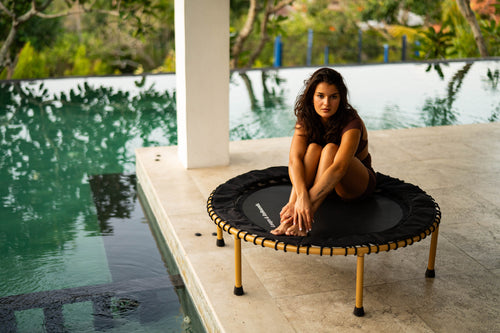






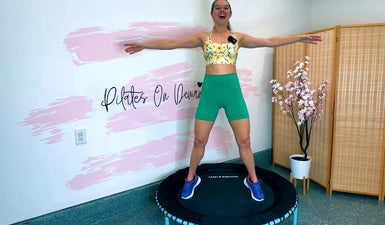
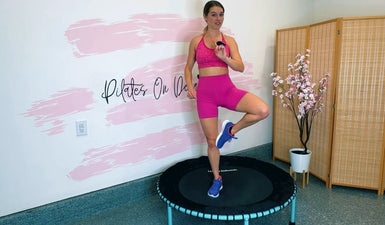
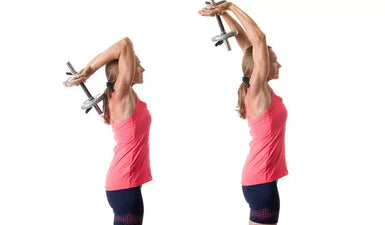
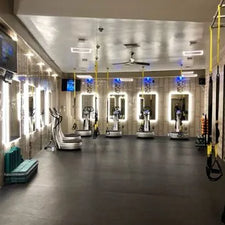

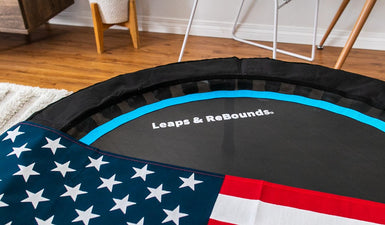
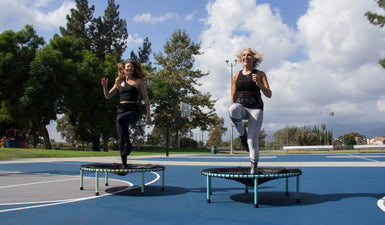

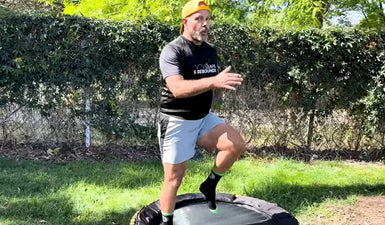








0 comments